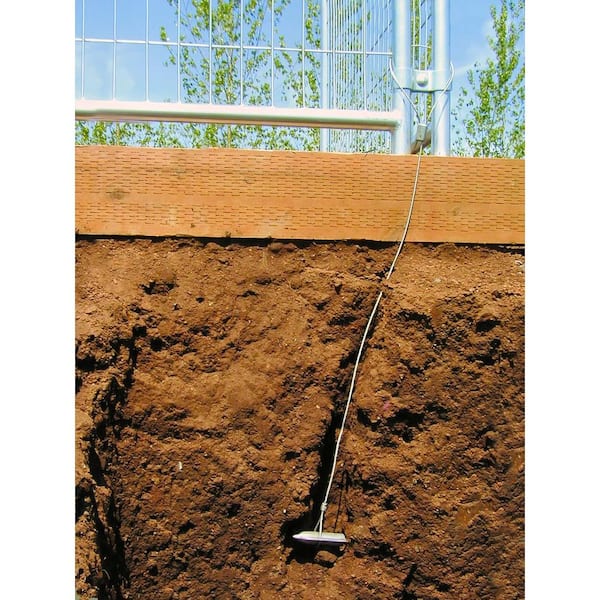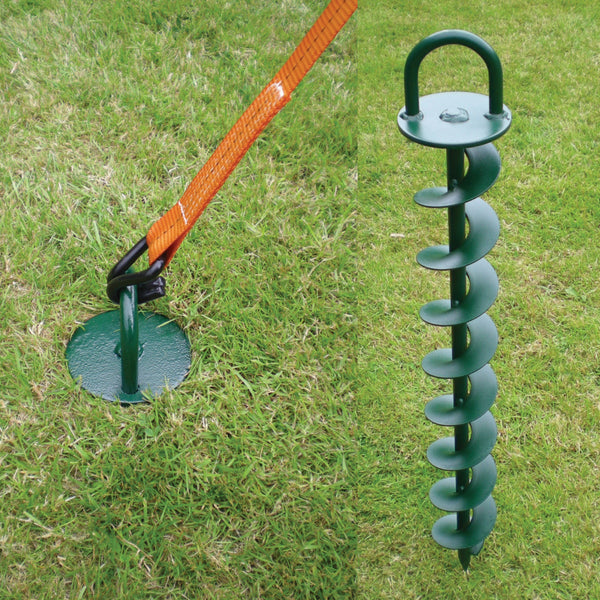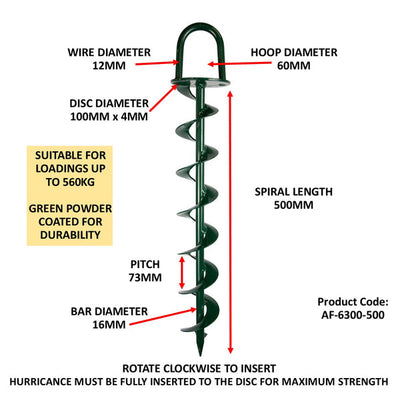Recent Developments in Ground Anchor Technology and Their Advantages
Recent Developments in Ground Anchor Technology and Their Advantages
Blog Article
Discover the Necessary Uses Ground Anchor in Building and Landscape Design
Ground supports are important elements in both building and landscape design, providing vital security and support across numerous applications. Their function in anchoring heavy tools and improving dirt retention emphasizes their significance in advertising security and sustainability.
Securing Fencings and Gates
Protecting fences and gates is a fundamental element of home delineation and safety in both household and industrial environments. Ground anchors play an essential duty in ensuring that these frameworks continue to be reliable and stable gradually. By supplying a robust anchoring solution, ground supports aid stop fences from leaning or collapsing due to ecological variables such as wind, dirt erosion, or ground motion.
In property settings, effectively secured fences not only boost the visual appeal of a building however also give safety and security and security for family pets and households. In business environments, safe and secure fencing is crucial for shielding assets, delineating residential or commercial property boundaries, and ensuring the safety and security of clients and employees. Ground anchors can be set up in numerous soil types and problems, making them versatile for different jobs.
Moreover, the usage of ground anchors permits a more permanent remedy contrasted to typical approaches, such as concrete grounds, which can be taxing and labor-intensive. Ground Anchor. This performance is particularly valuable in landscape design tasks where timelines are important. In general, the assimilation of ground supports into fence and gate setups significantly adds to their durability, functionality, and general efficiency in protecting residential properties
Stabilizing Short-term Frameworks
While temporary frameworks are frequently made for short-term usage, their security is crucial for ensuring security and capability during their functional period. Ground anchors function as an efficient remedy for maintaining these structures, which may include camping tents, phases, or modular buildings. By anchoring these installments securely to the ground, ground anchors assist withstand wind uplift and side forces that might endanger the stability of the structure.

Furthermore, the use of ground supports enables very easy removal and repositioning of momentary structures, making them a suitable choice for building and construction sites or events that need flexibility. Overall, ground anchors are an important tool in the effective and secure monitoring of short-term frameworks, guaranteeing they perform accurately throughout their planned use.
Sustaining Retaining Wall Surfaces
Using ground anchors considerably boosts the structural honesty of preserving walls, which are essential for managing dirt erosion and keeping landscape stability. Maintaining walls undergo side earth pressures, and without sufficient support, they can fall short, bring about costly repair work and prospective damages to bordering structures. Ground supports offer a trusted service by transferring the load from the wall surface into the underlying soil or rock, making sure the wall stays secure and upright.
These supports are commonly set up at a fixed angle and depth, allowing them to resist the forces put in by the maintained soil. By making use of high-tensile strength products and correct installment strategies, ground supports can considerably enhance the wall's efficiency under different environmental problems, consisting of hefty rainfall and seismic task.
In enhancement, the use of ground anchors can minimize the requirement for considerable excavation and material usage, promoting even more sustainable building techniques. This technique not only boosts the resilience of retaining wall surfaces however also lessens the overall impact of landscaping jobs. Integrating ground supports in preserving wall style is an important method for both construction professionals and landscape architects aiming to guarantee long-lasting security and safety.
Anchoring Heavy Equipment

Ground anchors supply a trusted approach to protect equipment, distributing pressures equally and strengthening stability. Using supports enables operators to function with confidence, specifically when raising or relocating heavy loads. Additionally, in scenarios where equipment should be placed on unstable or soft click this link dirt, ground anchors can be mounted to enhance grasp and protect against devices from sinking or ending up being paralyzed.
Implementing an organized strategy to securing hefty tools not just boosts functional performance but also upholds security requirements on website. Normal assessments and maintenance of securing systems are necessary to guarantee their proceeded efficiency. By focusing on the anchoring of heavy tools, building and construction and landscape design experts can develop more secure work environments, inevitably resulting in even more effective project end results.
Enhancing Soil Retention

Soil disintegration presents a significant challenge in both building and construction and landscape design tasks, making effective dirt retention techniques necessary. Ground supports play an important role in enhancing dirt retention by providing security to structures and vegetation, consequently preventing dirt variation brought on by water drainage and wind.
The setup of ground supports entails embedding steel poles or cable televisions deep right into the soil, which are then protected to maintaining walls, terracing systems, or plants. This anchoring mechanism not just maintains the soil yet also enhances the overall stability of landscape design functions. As an example, in sloped locations, ground supports can be utilized to sustain maintaining wall surfaces, properly lowering the threat of landslides and soil erosion.
In addition, these anchors aid in the establishment of deep-rooted plants, which better fortify the soil framework. By urging root growth, ground anchors contribute to a robust community that normally holds dirt in position, lowering the requirement for man-made obstacles or frequent upkeep.
Conclusion
Finally, ground supports offer several essential features in construction and landscaping. Their application in protecting fencings and gateways, maintaining momentary frameworks, supporting retaining walls, securing hefty equipment, and improving dirt retention highlights their importance in advertising security and security. By promoting these crucial tasks, ground anchors add substantially to the general stability of different projects, ensuring toughness and sustainability in both industrial and household setups. Their adaptability makes them an important device in modern construction practices.
By providing a durable anchoring solution, ground anchors aid prevent fencings from leaning or breaking down due to ecological variables such as wind, soil erosion, or ground motion. - Ground Anchor
By anchoring these setups safely to the ground, ground supports assist resist wind uplift and side forces that can jeopardize the stability of the structure.
Utilizing ground supports significantly improves the structural integrity of keeping walls, which are crucial for handling dirt disintegration and preserving landscape security. Ground anchors provide a trustworthy service by transferring the read the article load from the page wall surface right into the underlying dirt or rock, ensuring the wall surface continues to be safe and upright.

Report this page